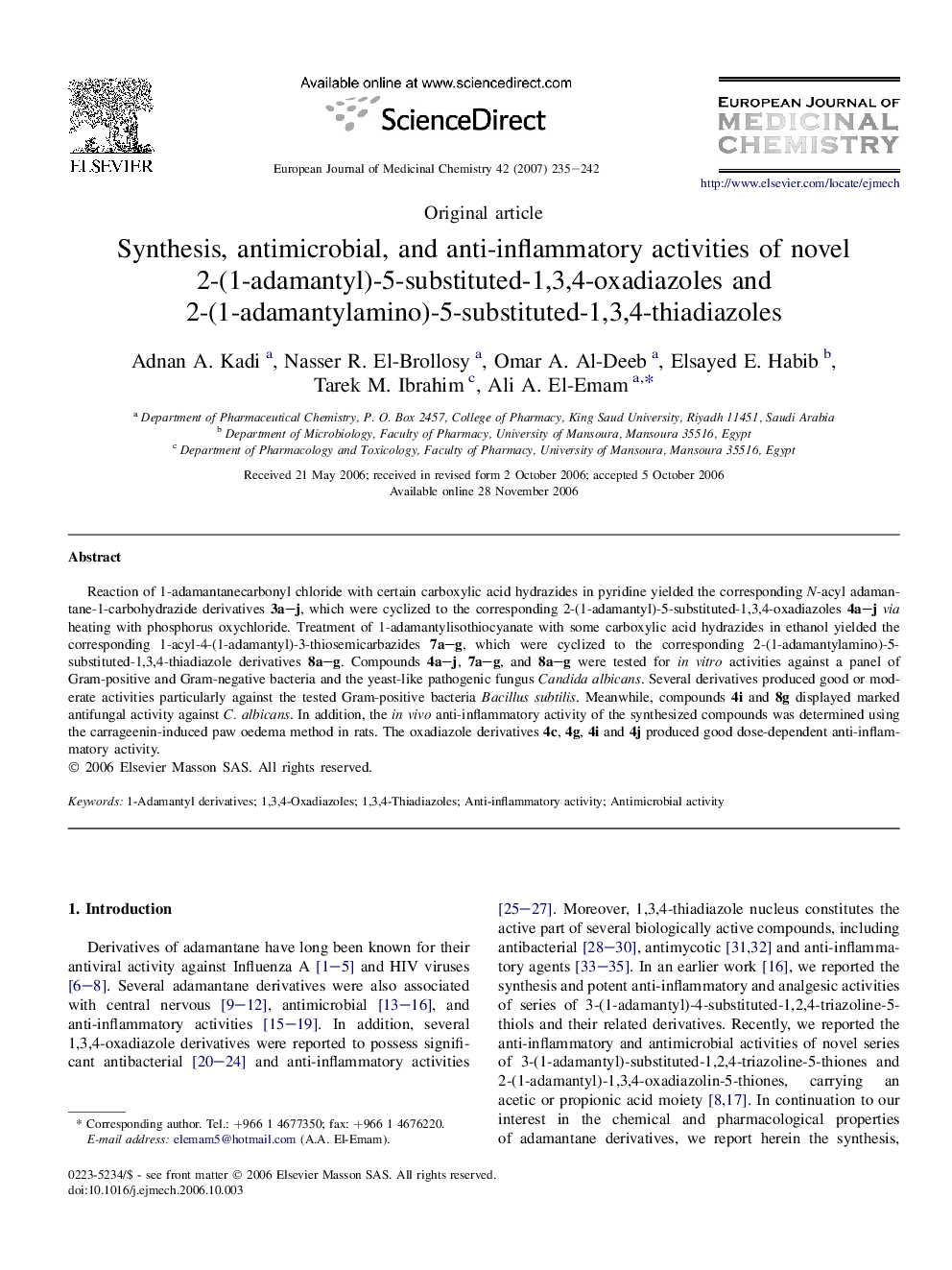| Article ID | Journal | Published Year | Pages | File Type |
|---|---|---|---|---|
| 1399946 | European Journal of Medicinal Chemistry | 2007 | 8 Pages |
Reaction of 1-adamantanecarbonyl chloride with certain carboxylic acid hydrazides in pyridine yielded the corresponding N-acyl adamantane-1-carbohydrazide derivatives 3a–j, which were cyclized to the corresponding 2-(1-adamantyl)-5-substituted-1,3,4-oxadiazoles 4a–jvia heating with phosphorus oxychloride. Treatment of 1-adamantylisothiocyanate with some carboxylic acid hydrazides in ethanol yielded the corresponding 1-acyl-4-(1-adamantyl)-3-thiosemicarbazides 7a–g, which were cyclized to the corresponding 2-(1-adamantylamino)-5-substituted-1,3,4-thiadiazole derivatives 8a–g. Compounds 4a–j, 7a–g, and 8a–g were tested for in vitro activities against a panel of Gram-positive and Gram-negative bacteria and the yeast-like pathogenic fungus Candida albicans. Several derivatives produced good or moderate activities particularly against the tested Gram-positive bacteria Bacillus subtilis. Meanwhile, compounds 4i and 8g displayed marked antifungal activity against C. albicans. In addition, the in vivo anti-inflammatory activity of the synthesized compounds was determined using the carrageenin-induced paw oedema method in rats. The oxadiazole derivatives 4c, 4g, 4i and 4j produced good dose-dependent anti-inflammatory activity.
Graphical abstractNew compounds with the above structures were synthesized and tested for antimicrobial and anti-inflammatory activity.Figure optionsDownload full-size imageDownload as PowerPoint slide
